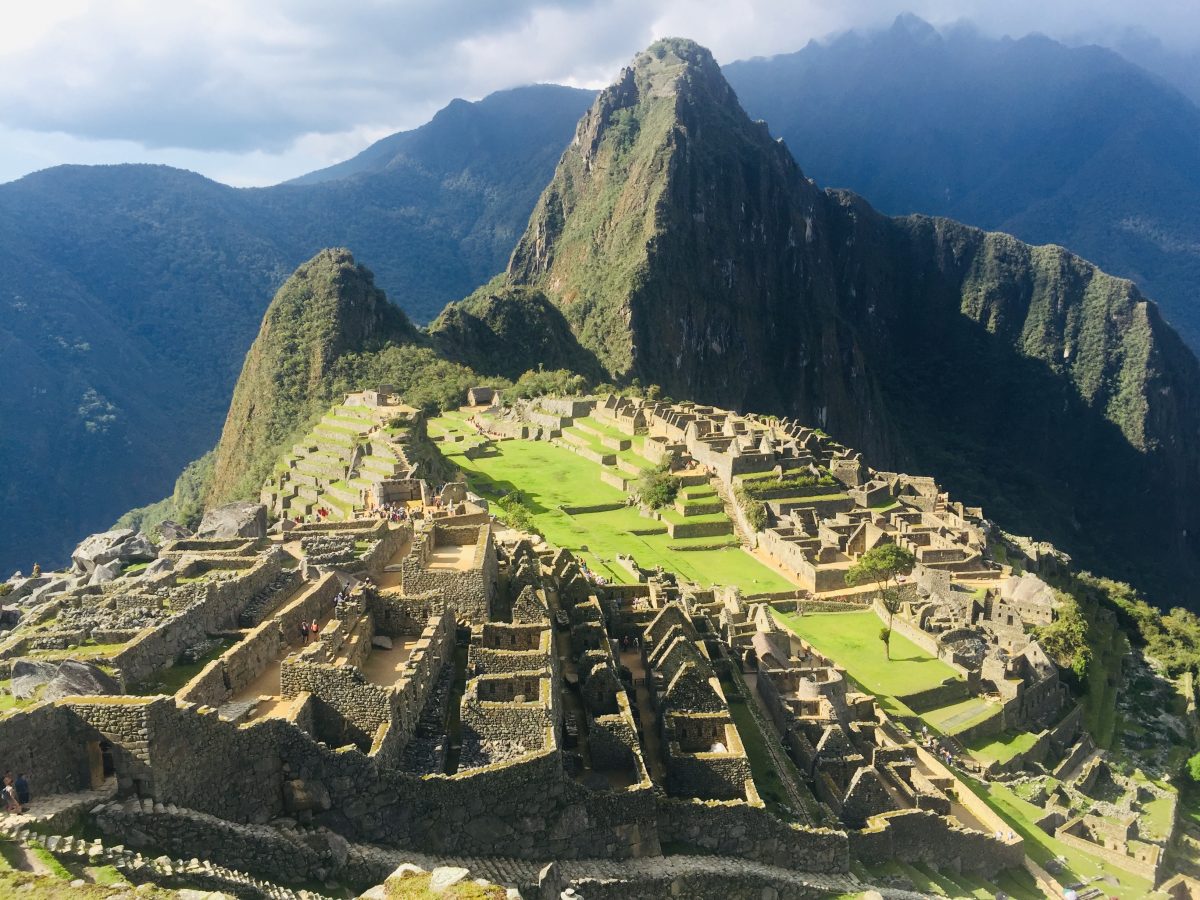11/23/19
By Annelise
After a week sailing about the equator the first few days walking the hilly cobblestone streets of Cusco at 10,000 feet had me feeling off kilter and akimbo. We had an apartment just above the charming San Blas neighborhood a block from the San Blas market. It was a great spot to venture into town with the only downside having to navigating friendly street dogs and their “gifts” on a 1 foot wide “sidewalks” while passing minibus mirrors required us to put our backs against the wall. To get into the center and plaza, we quickly found quieter side walking streets to reduce the hazard of a shoulder dislocation.
All that said, walking is definitely the best way to get around Cusco. Driving through town is like unraveling a knotted skeen of yarn. Walking also lets you marvel at the Inca walls and building foundations that the colonial Spanish architecture squats on top of. Walking also feels like tumbling through a kaleidoscope of color and sound. Every few steps vendors are offering menus, massages, alpaca goods and watercolor paintings. The texture, color and fine detail of the textiles in this region are amazing, I wish I could carry a whole other duffle for soft alpaca sweaters and woven art.
The San Pedro market (apparently designed by the same man who designed the Eiffel Tower) is a dense grid of aisles each selling a different type of ware. The aisles of women juicing delicious tropical fruits, many I had never seen before – bonus each order is enough for 3 glasses. There are aisles of fresh meat; half carcasses being sectioned or piles of chickens with their feet sticking out at you. Aisles of Cheese, honey, trout caviar. Then rows of quinoa, vegetables stalls and those for medicinal herbs, flower stalls with every color of gladiola, an aisle just for chocolate (super yum), food stalls and of course souvenirs. This market and also the one in San Blas are where we bought most of our groceries for the week.
Walking I also notice the older-than-years women hunched forward carrying colorful Peruvian woven cloth bundles half their size on their back; goods to sell at the market, a street corner, who knows but it appears heavy. Younger women use the same sort of bright cloth to strap their babies and toddlers to their back. The men for the most part are less encumbered. So it seems, until you see them at work outside the city center on precarious road projects, driving under-powered trucks with heavy loads on tiny winding roads, working construction with scant scaffolding.
Walking I notice the thin air, with intermittent showers the air is cool and so so very clear. It is breathtaking – literally. There is almost no view from a hillside where you cannot see old Inca terraces or roads. It seems like the entire Inca territory from Ecuador to Santiago must have been lined with terraces of corn. The degree of skill and sophistication of the Inca architecture and stonework when compared to Europe in the 1200s is impressive. A carved 200 ton corner stone here or there, or a whole row or them carefully hewn. Whether hiking ruins or just walking through town the old Inca steps are big, and given that most locals are shorter than me, I figure they must have legs of steel. I had initially planned that we would trek to Machu Picchu via Salkantay, I look forward to returning in the next five years when all in our family has mental stamina can meet the physical requirements of a high Andes trek.
We spent 9 nights based in Cusco and 5 based in Olantaytambo in the Sacred valley. The later a quieter and very much smaller version of the former. Sixty percent of the Cuscenean economy runs on tourism. It is at times annoying to have some many offers placed in front of you. Yet if tourism supports the traditional crafts, traditions and the preservation of ancient sites then I hope the balance remains positive. It is impressive to see so clearly how a conquering nation so thoroughly dismantled the sacred sites and ways of life; harvested the stones of the cherished temples and used them to construct the churches they built in their place. The well and purpose-hewn stones were removed to build new Spanish buildings. After the fall of the Inca Empire not just the stones but the treasures and burial sites were looted. The jungle swallowed up cites as Machu Picchu, and held the ruins mostly a secret for centuries, possibly protecting them from further destruction. Scholars are still trying to interpret the significance of these incredible sites. It is said that history is written by the victors and it makes one want to take the chronicles with more than a few grains of Maras salt. Brutal Spanish colonialism and Catholicism wielded power for nearly 300 years before Peru would reclaim its independence and identity. It is very interesting to experience the melding and tension of the Inca and Spanish history on the present. From the arts, the food, the history and nature it makes Peru very much worth a trip.
